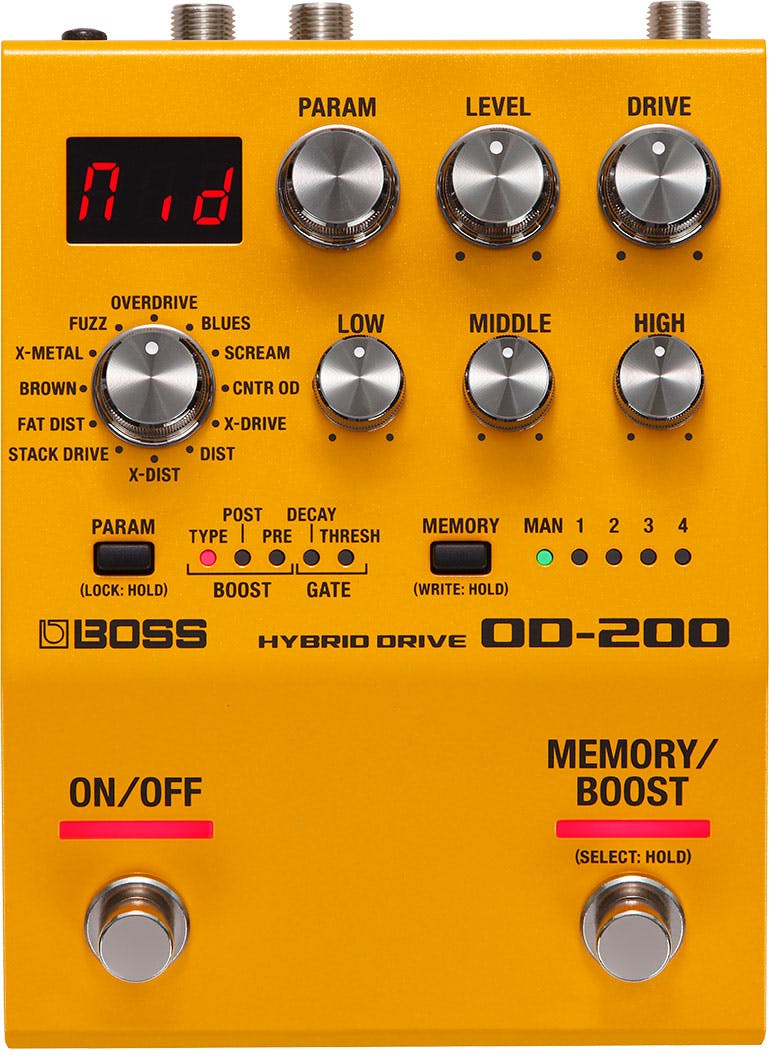Description
The Boss OD-200 Hybrid Drive Overdrive & Distortion Pedal is currently retailing at £219 and it is in stock. Available to be delivered to you by post direct (some charge may apply).The team at Just Pedals think that Boss nailed it with the Boss OD-200 Hybrid Drive Overdrive & Distortion Pedal. Boss OD-200 Hybrid Drive Overdrive & Distortion Pedal
We have new and used Boss musical equipment available on our website for fast direct delivery from sellers across the UK & Europe.
BOSS is one of the most iconic and influential effects pedal brands, renowned for its durable, compact stompboxes and industry-leading innovation. A division of Roland Corporation, BOSS has been shaping the sound of musicians since the late 1970s, offering everything from legendary overdrives like the SD-1 and DS-1 to cutting-edge digital effects like the DD-500 and RV-6. Known for their reliability, versatility, and signature buffered bypass, BOSS pedals are a staple on pedalboards worldwide, trusted by beginners and professionals alike.
Distortion is a type of guitar effect that alters the sound by adding sustain, harmonic richness, and a gritty or aggressive character. It clips the audio signal, creating a more saturated and powerful tone. Distortion is commonly used in rock, metal, and punk music, offering everything from warm, crunchy overdrive to heavily saturated, high-gain chaos. Unlike overdrive, which mimics the natural breakup of a tube amp, distortion produces a more intense, compressed, and processed sound. Popular distortion pedals include the Boss DS-1, ProCo Rat, and MXR Distortion+.
Just Pedals is a new Guitar Effect Pedals Marketplace – We feature new and used Guitar Effect pedals from different sellers, to purchase online from the UK.
We checked and good news we have it in stock, it has your name on it.
Order today and we will have it with you in a jiffy !
Just the latest videos
Just related products
17% Off £258.00 £215.00
Expression Pedal/Footswitch Input Overdrive/Disttion Pedal with 12 Drive Modes MIDI I/O
14% Off £108.00 £92.60
Flexible distortion pedal capable of producing blended overdrive/distortion sounds Provides both "over-the-top" distortion sounds and less extreme overdrive tones for rhythm playing Includes Level, Tone, Drive and Color controls for precise tonal sha…
read more
8% Off £73.00 £67.40
Since 1981, the SD-1 Super Overdrive has been a go-to gain pedal for generations of players—trusted across genres for its reliable tone and performance. Built on the groundbreaking asymmetrical clipping circuit of the iconic 1977 OD-1—one of the firs…
read more
£240.77
12 drive modes and 15 boost types with individual gain positioning (pre/post) Blues, X-Drive, Fat Distortion, Brown Sound, Fuzz, X-Metal, Scream, Cntr Overdrive and Distortion Serial or parallel boost structure possible Gate function eliminates noise…
read more
£124.99
Special edition BOSS overdrive pedal with next-generation sound, feel, and response All-new design provides a superior playing experience thatâ€s unattainable with analog overdrive pedals Powerful real-time processing delivers rich, wide-range sounds…
read more



































